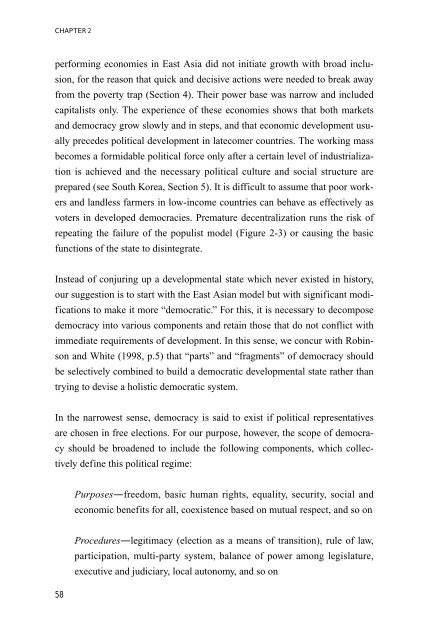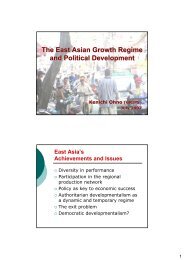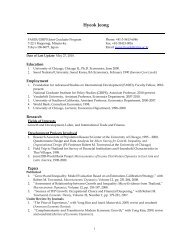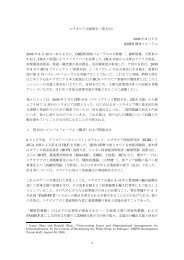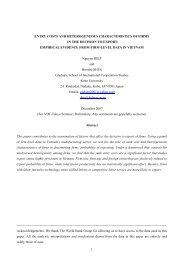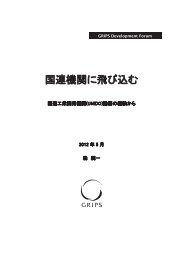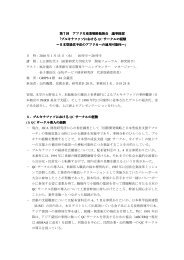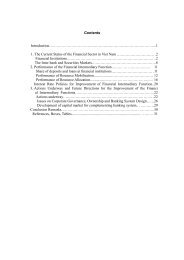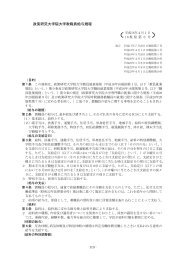The East Asian Growth Regime and Political Development*
The East Asian Growth Regime and Political Development*
The East Asian Growth Regime and Political Development*
Create successful ePaper yourself
Turn your PDF publications into a flip-book with our unique Google optimized e-Paper software.
CHAPTER 2<br />
performing economies in <strong>East</strong> Asia did not initiate growth with broad inclusion,<br />
for the reason that quick <strong>and</strong> decisive actions were needed to break away<br />
from the poverty trap (Section 4). <strong>The</strong>ir power base was narrow <strong>and</strong> included<br />
capitalists only. <strong>The</strong> experience of these economies shows that both markets<br />
<strong>and</strong> democracy grow slowly <strong>and</strong> in steps, <strong>and</strong> that economic development usually<br />
precedes political development in latecomer countries. <strong>The</strong> working mass<br />
becomes a formidable political force only after a certain level of industrialization<br />
is achieved <strong>and</strong> the necessary political culture <strong>and</strong> social structure are<br />
prepared (see South Korea, Section 5). It is difficult to assume that poor workers<br />
<strong>and</strong> l<strong>and</strong>less farmers in low-income countries can behave as effectively as<br />
voters in developed democracies. Premature decentralization runs the risk of<br />
repeating the failure of the populist model (Figure 2-3) or causing the basic<br />
functions of the state to disintegrate.<br />
Instead of conjuring up a developmental state which never existed in history,<br />
our suggestion is to start with the <strong>East</strong> <strong>Asian</strong> model but with significant modifications<br />
to make it more “democratic.” For this, it is necessary to decompose<br />
democracy into various components <strong>and</strong> retain those that do not conflict with<br />
immediate requirements of development. In this sense, we concur with Robinson<br />
<strong>and</strong> White (1998, p.5) that “parts” <strong>and</strong> “fragments” of democracy should<br />
be selectively combined to build a democratic developmental state rather than<br />
trying to devise a holistic democratic system.<br />
In the narrowest sense, democracy is said to exist if political representatives<br />
are chosen in free elections. For our purpose, however, the scope of democracy<br />
should be broadened to include the following components, which collectively<br />
define this political regime:<br />
Purposes—freedom, basic human rights, equality, security, social <strong>and</strong><br />
economic benefits for all, coexistence based on mutual respect, <strong>and</strong> so on<br />
Procedures—legitimacy (election as a means of transition), rule of law,<br />
participation, multi-party system, balance of power among legislature,<br />
executive <strong>and</strong> judiciary, local autonomy, <strong>and</strong> so on<br />
58


